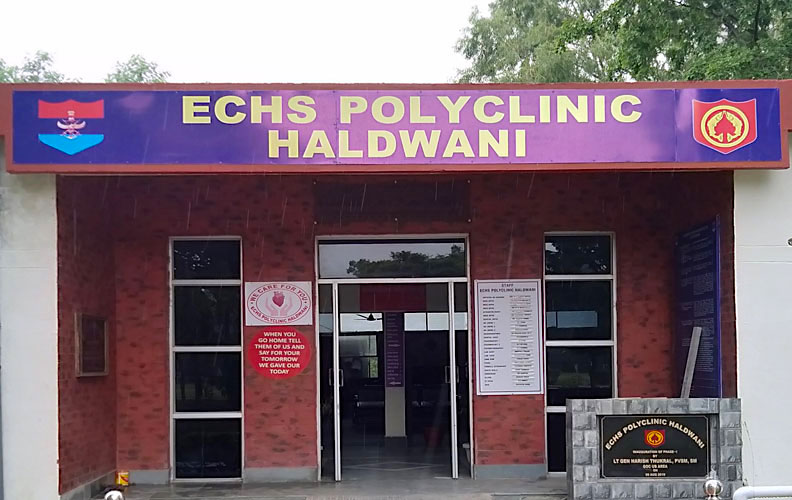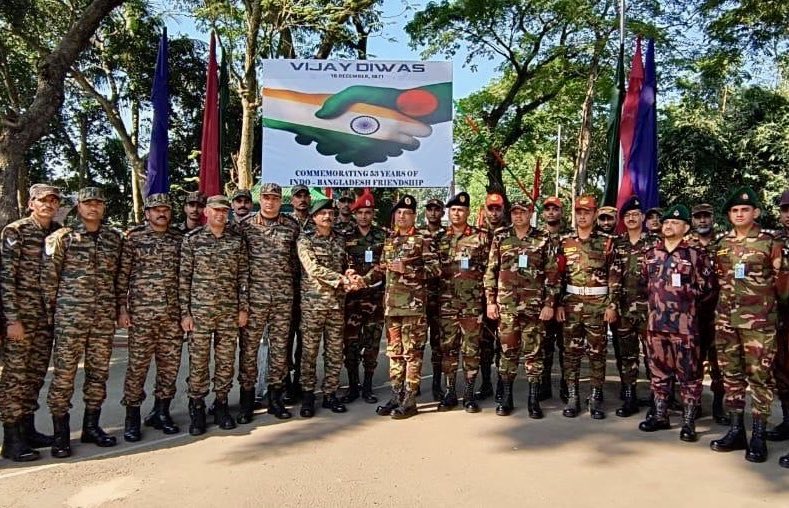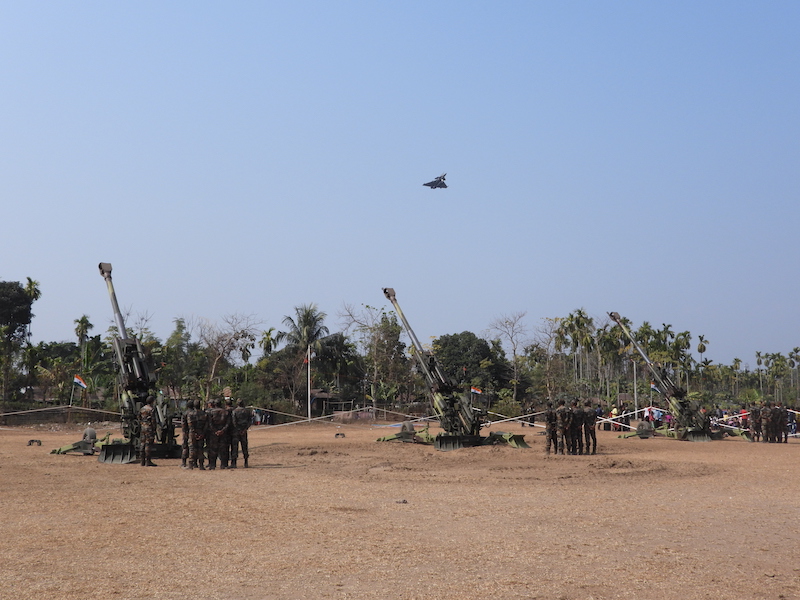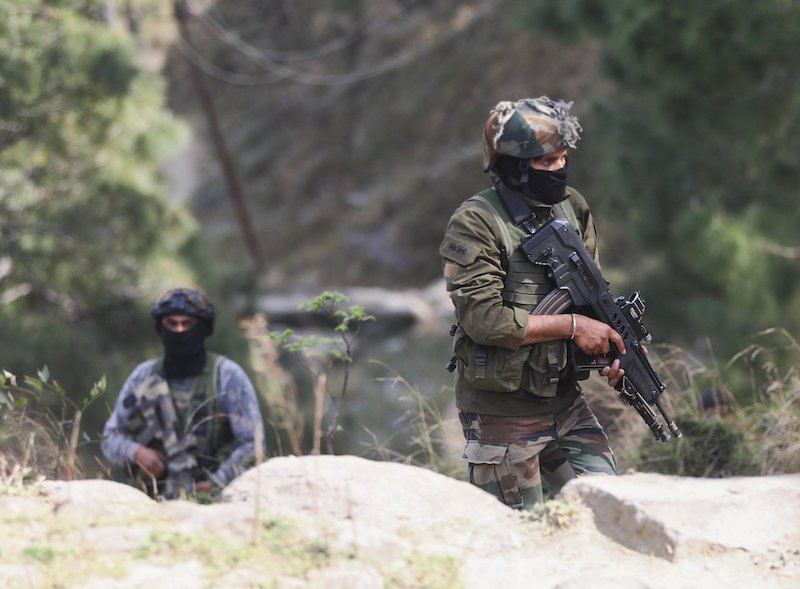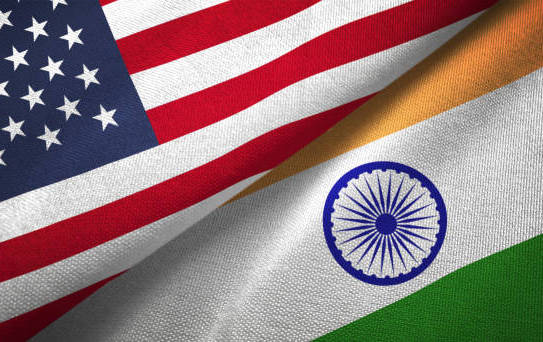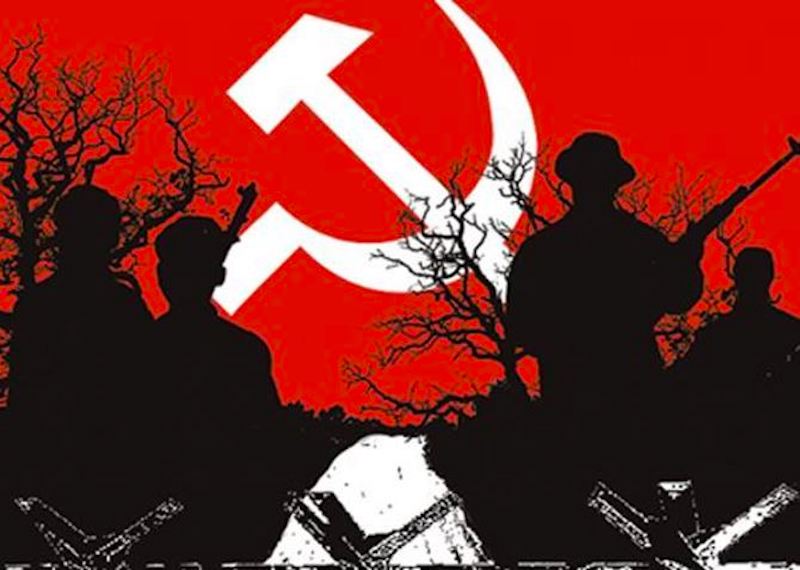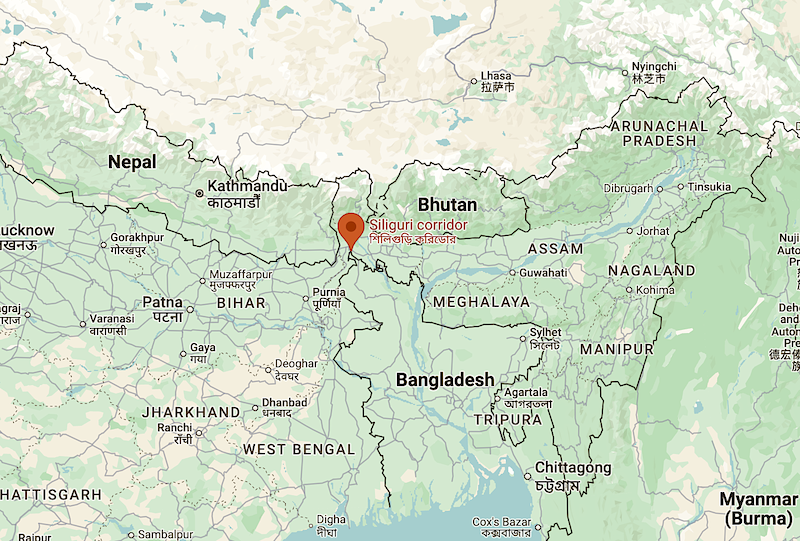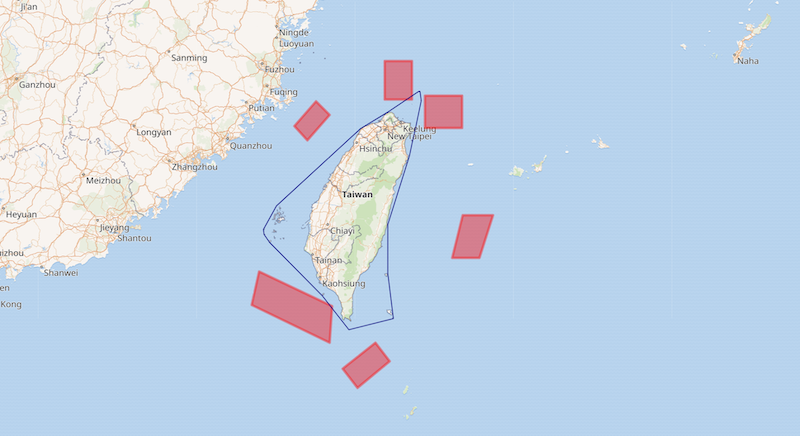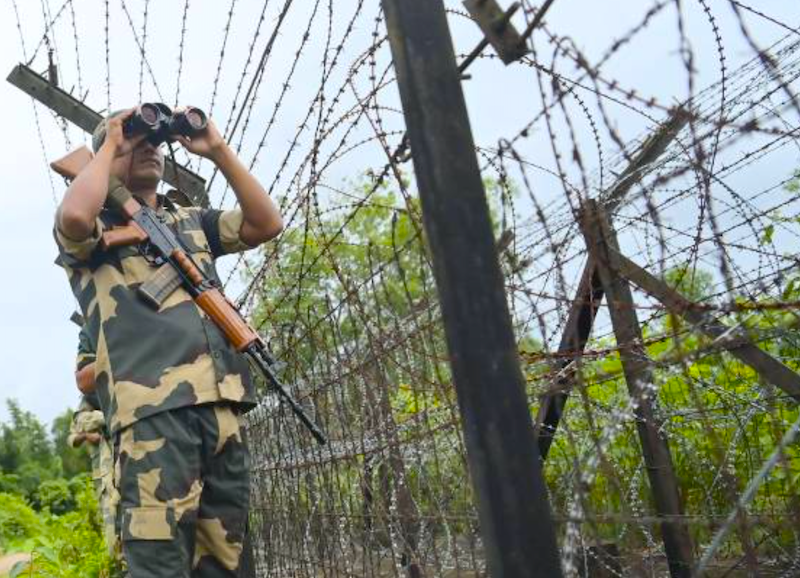 Taliban fighters riding a Humvee left by US forces, in Kabul.
Taliban fighters riding a Humvee left by US forces, in Kabul.
Afghanistan is transitioning from one crisis to another. Strategically located at the crossroads of the old silk route connecting the east with the west, Afghanistan and India have a strong relationship based on historical and cultural links. However, with the latest rapid turn of events, the Taliban have returned to power after regrouping in Pakistan and waging an insurgency against the US-backed government in Kabul in Afghanistan 20 years after their ouster by the US military with the help of the Northern Alliance – an anti-Taliban group that was headed by Ahmad Shah Masoud, who was assassinated just days before the 9/11 terror attacks.
The Taliban’s rapid takeover of Afghanistan and its capital, Kabul, sparked concerns that they will impose a harsh sharia-based rule, abuse human rights, and neglect to provide basic services to the people of the country. Now, the group faces the challenges of allaying those fears and ensuring basic human rights to all Afghan citizens in general and women and children in particular. At the very outset, it may be prudent to ask the global community as to what they expect in Afghanistan in the end – turmoil or peace and stability. If it is peace and stability, the collective ownership and responsibility of humanity warrants “unity of purpose” and “unity of approach”.
To ensure “peace and security, human rights, rule of law and development” – the four pillars of the United Nations driven by “rules- based international order” and “recognition of the fundamental rights of all its people” – in Afghanistan, of all countries currently involved in Afghanistan, India possibly has the best credentials to act as an honest broker. India would do well by applying itself in choosing an intermediate agency to ensure that the final decision is something that would ensure peace in the region and prevent any major turmoil in South Asia, checkmating both Pakistan and China. Towards that end, India's leadership demonstrated, as the president of UN security council in August 21, by adopting UN Resolution 2593 (2021) demanding Afghan territory not to be used to threaten or attack any country and reiterating the importance of combating terrorism in Afghanistan.
This could be a good start point to restore peace and stability preserving the achievements of the last 20 years.
Afghanistan is a landlocked country of geostrategic importance, being at the crossroads of the gateway to the Central Asian republics, South Asia and the Middle East. A multi-ethnic country, of 39 million or so Afghan residents with 14 major tribes, 42% are Pashtuns, 27% Tajik, 9% Hazara, 9% Uzbeks, 4% Aimak, 3% Turkmen, 2% Baloch and 4% fall into an unspecified “other” group. Among the tribes, the Pashtuns further divided into 60 subtribes, and each are based on a clan system. They are the most politically influential and dominant group in Afghanistan. Successive governments have formed via the political expansion of Pashtun tribes with international assistance. Major fault lines of deep interethnic divisions and differences exist between different tribes. The Pashtuns are further divided by the Durand Line – the border between Pakistan and Afghanistan. This line is not accepted by either the erstwhile Government of Afghanistan or Pashtuns on both sides of the Durand line including Taliban ( Afghanistan) and Teherik-i-Taliban (Pakistan). A multilingual country in which two languages – Pashto and Dari – are both official and most widely spoken.
Afghanistan is divided into 34 provinces and 421 districts. It is home to multiple terrorist outfits, like the Islamic State (Khorasan), al-Qaida, Jaish-e-Muhammed (JeM), Lashkar-e-Taiba (LeT), East Turkestan Islamic Movement (ETIM – militant group of Uighurs from China’s Xinjiang) and other jihadist groups. The Haqqanis from the Haqqani religious seminaries in Pakistan form the military wing of the Afghan Taliban, who have very close ties with Pakistan’s Inter -Services Intelligence. The IS(K), which came into being in 2015, majorly constitutes the breakaway factions of the Afghan Taliban, which had targeted US forces, the International Security Assistance Force and the US-backed Afghan government, and the Tehrik-i-Taliban (Pakistan), which targeted Pakistani security forces and its law-enforcement agencies. Afghanistan is also a part of the so-called “Golden Crescent” and suffers from the fallout of being the largest producer of high quality narcotics in the world, one of the major sources of revenue for the various terrorist groups.
Strategically speaking, the 9/11 terror attacks on the US has not only altered the perception and understanding of terrorism from a local / regional phenomenon to a global one, but also has triggered geopolitical consequences marking an end of the American unipolar phase since the end of the Cold War . The ensuing “war on terror” has only sapped the national energies of the US, raised the costs of its extended empire, and undermined its unique and unparalleled experiments in meddling in other countries. That the world has moved unmistakably towards a multipolar geopolitical terrain with a cluster of major powers jostling for influence. The growing polarization among major powers – China, Russia, and the US – driven by political and economics not ideological has led to an inconsistent phenomenon of individual major powers asserting national sovereignty by prioritizing their unilateral policies over commitment to international cooperation. One result of great power rivalry has been weakening of the moral framework for fighting global terrorism with geopolitics and national interests becoming the dominant factor. China, with its economic muscle of $14.7 trillion GDP estimated to overtake the US economy by 2027-28, is the proverbial dragon in the room in front of this pack with a head start in a new world where security and safety are of paramount concern. The global “war on terror” may have been consigned to the detritus beginning with the decision of the Donald Trump administration to initiate talks with the Taliban – and not with the Afghan government headed by Ashraf Ghani – for the withdrawal of US troops. This legitimized the Taliban and acknowledged their premier role in the affairs of Afghanistan.
As the last US soldier departed on August 31, the US president, Joe Biden, announced that the conclusion of the 20-year misadventure was “not just about Afghanistan”, but “about ending an era of major military operations to ‘remake other countries’.” Biden said, “We've been a nation too long at war ... We no longer had a clear purpose.” With last remaining Afghan opposition holdouts, like the Panjshir valley, having reportedly fallen, the regrouping of the National Resistance Front led by Ahmad Masoud along with the former Afghan vice-president, Amrullah Saleh, although underway, the Taliban do appear to have established some sort of a control with setting up of an initial 33-member (30 Pashtuns, 2 Tajikis and 1 Uzbek) interim government and later expanded it to include 17 more non-Pashtun new members from the Hazara, Tajik and Uzbek ethnic groups.
However, not a single woman has been included in the cabinet so far.
The expansion aimed for inclusiveness notwithstanding, the new government is unlikely to be fazed by the fact that 17 out of 33 appointed initial members of the caretaker government are on various terror lists, including that of the UN and the US. Thus, on a deeper reflection, hopes of a pragmatic Afghanistan behind the religious garb may prove highly short-lived.
With several thousand displaced, and many more are being forced to flee the country, the prevailing humanitarian situation remains critical with acute food shortages, possible drought and famine looming large on Afghanistan. Furthermore, the presence of many newer terrorist outfits, who got their hands on $85 billion worth of arms and ammunitions, military vehicles, high-tech gadgets, aeroplanes, bases, etc, that were left by US troops and the Afghanistan National Defence and Security Forces, compound the crisis. This may further jeopardize the peace and security in the region and make things complicated further for the nations seeking stability in the region. Hence, the achievement of US and ISAF occupation of Afghanistan for two decades would appear to be an unmitigated disaster to say the least. Furthermore, having spent around $2.26 trillion since 2001, including $1.53 trillion in defence, the US could not have frittered away its resources without any tangible takeaways, although they failed to rebuild Afghanistan in two decades as 90% of Afghanistan’s population live below the poverty line (making less than $2 per day) in July 2020.
Given the above-discussed situation, it may not be out of place to take cognizance of the fact that jihadist groups trained, financed, and aided by Pakistan are the principal threat to India. Pakistan has been relentlessly using their groups to launch terror attacks in India, especially in Jammu & Kashmir. Despite all projections, Pakistan is unlikely to stop its proxy war against India using these terror groups. Some new jihadist groups, like the IS(K), which are being supported by the ISI, might start their activities in J&K, although India has a robust counterterrorist grid in place in the Union territory.
India has invested over $3 billion in Afghanistan in the last two decades. The projects in which India invested include small people-oriented as well as large development projects, like building the country’s parliament building, the Zaranj-Delaram road that connects Iran with the Kandahar-Herat highway, Pul-e-Khumri power line over the Salang pass, which transmits electricity to Kabul from Uzbekistan even today, the Hari Rud river dam, etc. India’s most important contribution is probably its help to Afghanistan to expand its human resources capacity to enable the country function effectively. This has been by way of India’s popular scholarship scheme, including women’s education, as well as training of public servants. Besides its many activities directly benefiting Afghan women, India supported two flagship projects by the “Self-Employed Women’s Association” and “Hand-in-Hand Afghanistan” in which India's government partnered with NGOs.
As a result, one of the most significant changes in Afghanistan in the past two decades has been the participation of women in the economy and public life.
India’s concerns regarding Afghanistan have as much to do with geopolitical positioning as to prevent Afghanistan from becoming a hub of terror groups that could impact India's security. Hence, it must think hard on how to overcome the adverse constellation of forces that have emerged. One possibility is for India to take on a mediating role among the different nations anxious to involve themselves in Afghanistan and formulate a strategy to ensure Afghanistan’s neutrality and ensure that it becomes a buffer zone to prevent further Chinese expansionism towards South Asia. To start with, India must make diplomatic efforts and utilize the two-year tenure of being the current non-permanent member of the UNSC to influence particularly US and UK among the permanent members and other emerging powers and declare Pakistan a state sponsor of terrorism with clearly defined benchmarks according to which status can be reversed.
Interestingly, the US state department designates Cuba, North Korea, Iran, and Syria as sponsors of terrorism. How does Pakistan not meet the criteria? And even if Washington lacks the desire to declare Pakistan a state sponsor of terrorism, it should at least allow Pakistan to be included in the “black list” that it so deserves when it is next evaluated by the Financial Action Task Force (FATF) – the global body that evaluates corruption, money laundering , terrorist funding in national financial system. It may be relevant to take note of the fact that US and UK have unofficially preferred that Pakistan remains on the organization’s “grey list” to ensure that it can continue to receive International Monetary Fund funding. Pakistan’s current diplomatic manoeuvres of wooing allies and targeting critics must also be tackled to prevent the west, especially the US, from falling into Pakistan’s line.
After Biden’s recent move in earnest to resume the dialogue on the Iran nuclear deal to restore the Joint Comprehensive Plan of Action of July 2015, India must restore its strategic ties with Iran. India also must develop positive and progressive relations taking advantage of Russia’s reluctance in official recognition of Taliban as a legitimate government and capitalize on the India-Central Asia Development Group along with Russia to counter China’s moves in Afghanistan. India must continue with humanitarian aids and people friendly projects that impact the life of common people of Afghanistan. India’s relations with Qatar must be given due impetus to isolate the Taliban and make it fulfil the benchmarks stipulated by UNSC Resolution 2593 (2021). India needs to “act west” to address the turmoil in Afghanistan.
The cancellation of the September 25 meeting of South Asian Association of Regional Cooperation (Saarc) foreign ministers, on the sidelines of 76th UNGA meeting, owing to insistence of Pakistan for a Taliban representative to attend the same is a step in the right direction. In addition, the five permanent UNSC members found common ground on September 22 on Afghanistan with officials saying all the powers would press the Taliban to be more inclusive after their military takeover. In addition, continued restrictions on travel of Taliban leaders, freezing of Afghanistan’s foreign exchange reserves of $9.5 billion and other economic sanctions would keep the Taliban under check and help to use them as a bargaining chip to exert political pressure on the country. In the meantime, the Taliban’s request to address the UN in New York having been referred to a nine-member credential committee indicates Taliban’s desire for international recognition which, per se, is the only leverage other countries must press for inclusive government and respect for rights, particularly for women in Afghanistan.
In view of the above, major developments and the emerging trend in the response of the Taliban so far, one can only hope that interference from Pakistan through the Haqqanis ceases forthwith and peace returns to Afghanistan at the earliest . However, given the peculiarities of “change management”, one would expect the internal rivalry within Taliban to smoothen and stabilize only with the international support in one to two years. Concurrently, the country could work towards regaining legitimacy and global recognition by peaceful means by its consistent good conduct and behaviour expected in a progressive and forward-looking society in Afghanistan. India, by virtue of its credentials and superior global reputation must play a proactive role to keep its National Interest protected and turn AfPak region a zone of peace.
Disclaimer: The views expressed in the article are the author’s own and don’t necessarily reflect the views of India Sentinels.
© India Sentinels 2021-22

